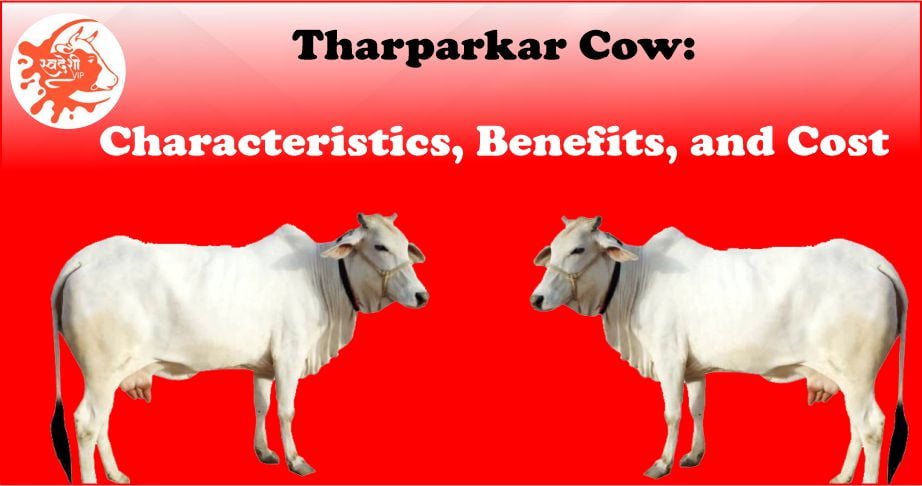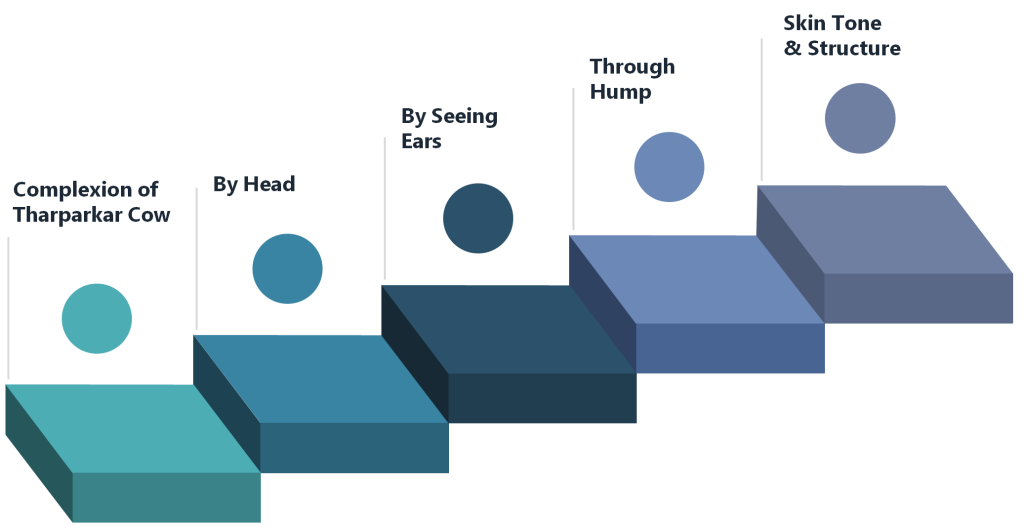
One of the few cows that can live in over 80% of Indian states is the Tharparkar cow. Milk from Tharparkar cows contains a lot of nutritional content. One of the most heard and essential fact is that milk includes nine important elements, a glass of milk is continually deemed as a complete meal. Your mother and grandma must have read you a list of the health advantages that a glass of milk has while making you empty your own. The smart ladies in your life were correct, and we’re here to tell you so. But have you ever given milk’s benefits to your body serious consideration? Well, it’s time to think.
Only specific breeds of cows exist in India’s unique climate that can endure in several places. The majority of Indian cows may not thrive in arid or hilly environments. A2 milk by Tharparkar Cows[1] typically includes 9.0 per cent SNF and 4.4 per cent fat. Knowing milk’s advantages for your health may encourage you to consume more of it on a daily basis! So, keep continuing reading because, in this article, you’ll learn about the benefits of Tharparkar Cow milk, so don’t skip it.
One of the most significant dairy cattle breeds in the western arid region of India is the Tharparkar cow. Tharparkar is a multi-purpose and disease-resistant breed of cattle named after the Thar Desert in Rajasthan. Depending on where it originated, the breed is also known as “White Sindhi,” “Grey Sindhi,” and “Thari” (Sind, Pakistan). It stands out among all Indian cattle breeds for its ability to resist the harsh desert climate and guarantee the livelihood of millions of small-scale farmers. It is a crucial part of animal farming in India’s arid regions, particularly Rajasthan.
The traditional Thari cattle are reportedly only found in the areas close to Umarkot, Dhoro Naro, Chhor, Naukot, Islamkot, Mithi, and Khari Ghulam Shah. Additionally, they are made in the nearby Indian states of Cutch, Jaisalmer, and Jodhpur. Maldars, or professional breeders, keep tharparkars in herds of 50 to 300 animals. To keep them from becoming shy and wild, they need to interact with people on a daily basis. Tharparkar cows are typically 408 kg in weight and 138 cm tall.
These are some following benefits of the Tharparkar cow:
You must travel alone to choose one if you are a person from outside of Rajasthan. Remember that most of the time, rather than from large farms, you acquire a healthy animal directly from a person. Thus, keep that in mind and ensure that you have a guarantee of locating someone with not more than five Tharparkar cows. A small herd of cows gives you a good notion of which healthy animal to choose.
You don’t need to bother about such attempts for a local in Rajasthan. Since they are aware of how to avoid fraud in the local animal farm market, they can simply visit their nearby farm and choose a high-quality and healthy breed. The Tharparkar cow can be purchased for between 55,000 and 70,000 INR (excluding the expense of transportation); however, within the state of Rajasthan, the cost is between 50,000 and 60,000 INR.
Indeed, of course. In the dairy farming industry, Tharparkar cows are profitable. Their feeding and resistance to unusual environments are two of the main causes. The Tharparkar cows continue to produce enough milk even after living in extreme heat and cold weather. They can produce good yields with less green feed and are resistant to illness and fever. The primary investment in the dairy farming industry goes into maintaining the animals’ living conditions and providing them with fodder. However, Tharparkar cows cut that expense and boosted overall net income. Therefore, Tharparkar cows are fruitful for the dairy farming industry even with lower milk yields.
While identifying these physical structures, one can discover a Tharparkar Cow:

The Tharparkar cattle are white or grey in colour. The grey colour is darker in males, especially on the fore and hind quarters. There is a light grey stripe running down the middle of the back. During the winter months, the cattle’s colour deepens. Due to the influence of the Red Sindhi and Gir, black and red or mixtures of these colours are frequently seen in the theoretical tract in addition to white and grey coat colours.
The forehead is broad, flat, and slightly convex above the eyes on a medium-sized head. The front of the horns and the face are nearly parallel. The skin between the eyes is frequently wrinkly and has parallel lines of wrinkles. The eyelids have a thin black ring around them, and the eyelashes are black in colour.
The ears are somewhat broad, long as well as semi-pendulous in form and face forwards. Besides this, horns are set well apart, curving gradually in the upward direction and outward in a similar line of the poll with blunt points pointed inwards. A significant segment of the skin with hair elongates over the horns’ base. In the male cattle, the horns are shorter, thicker as well as straighter than in the females.
The hump in males is properly developed, firm and placed in front of the withers. Moreover, the dewlap is medium in size, and the skin is fine as well as mellow. The sheath in the males is moderately-sized and is also semi-pendulous. The navel flap in the female Tharparkar cow is well-known. The size is identified for its variable nature. Shoulders are light, and legs are short-sized but reasonably proportionate to the body. In addition to this, the hooves are stiff, black, of moderate size and do not tend to turn out.
Except on the udder, below the belly segment, the colour of the skin is black, on the lower portion of the dewlap and inside the ears, where it eventually reaches yellow. The hair is fine, short, and straight. However, in the male, it is a bit curly on the forehead. Tharparkar cattle are considered to be very sturdy and resistant to numerous tropical diseases, but there is a scarcity of definite data. Although animals of the breed are awesome foragers and can fight hard amid climatic & environmental circumstances, they have not been used mainly as a source of meat, and breeders have given hardly any attention to meat qualities.
Dairy products generally offer a good nutritional foundation for weight loss. Dietary minerals may be crucial because they affect adipocyte metabolism via calcitrophic hormone and reduce the amount of energy that can be acquired from fat in food products by generating indigestible complexes. Functional dairy ingredients make a substantial contribution to the prevention of many diseases, including diabetes, cancer, obesity, hypertension, and some transmissible illnesses.
On the other hand, these bioactive dairy components have a wide range of uses. Tharparkar cow milk is among one them which provides multiple benefits to individuals; this milk can aid with better digestion, which can help with effective blood pressure management and the prevention of heart disease. Hence, in numerous ways, Tharparkar cow milk is beneficial to individuals. At SwadeshiVIP, we offer A2 Gir cow milk, Sahiwal Cow milk, Tharparkar, and Rathi Cow Milk in Delhi NCR. We hope that this article has furnished you with insightful information. Connect with us to learn more.
Read Our Article: Swadeshi VIP Is Emerging as The Best A2 Cow Milk Farm in Greater Noida
